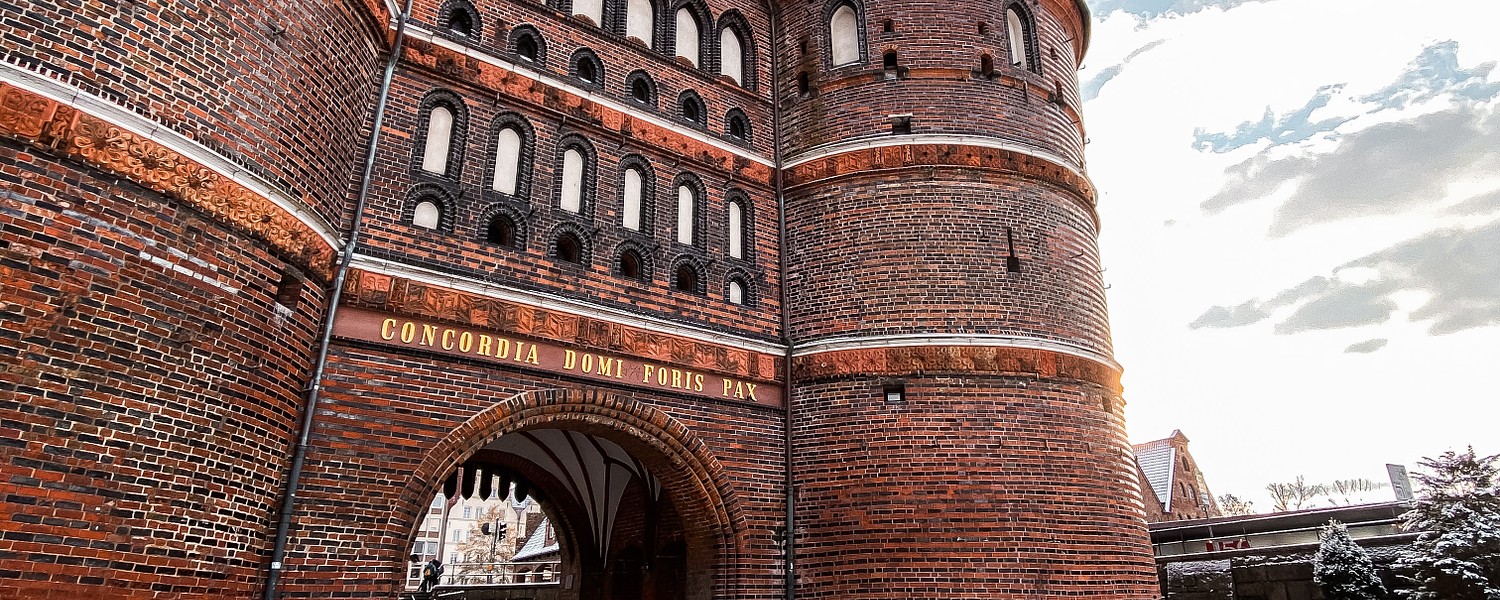
Provided by:
LTM

Our travel guides are free to read and explore online. If you want to get your own copy, the full travel guide for this destination is available to you offline* to bring along anywhere or print for your trip.
*this will be downloaded as a PDF.Price
€4,95
The City
The guide was updated:
Lübeck, a UNESCO World Heritage site since 1987, was one of the great mercantile cities in the Middle Ages. Nowadays it offers what guests search for: a town small enough to be diverting, history to learn and a seaside for relaxing hours. The first impression is of soothing harmony. The width of the streets, the height of the roofs, and the length of time it takes to stroll across the market place have the right pro-portion. Since the 13th century the “city of seven spires” has been depicted with the same skyline of green-clad belfries rising above the red-tiled roofs.
Lübeck always was rather special: Queen of the Hanseatic trading league for 500 years, and today the gate to the Baltic Sea, to Scandinavia and the Baltic countries. Founded in 1143 by Adolf von Schauenburg and revived in 1157 by Heinrich "The Lion", it was declared to be a self-governing imperial city back in 1226 by Kaiser Friedrich II, and retained this status right up until 1937. The Second World War left deep wounds. But the literal hanseatic frame of mind of the city's citizens has made it possible to restore the 7 famous spires, many merchants' houses, alleys, courtyards and cloisters.
And Lübeck’s characteristic feature is water. The Old Town island, surrounded by the river Trave and the canal, today still communicates the charm and cosmopolitan approach of a port. Both the city ports and Europe's largest ferry terminal in Lübeck-Travemünde clearly demonstrate that time has not stood still here. Trave-münde is one of the most beautiful and most appealing sea resorts of Europe which already in 1802 transformed the former fishing- and sailor village into a top address for bathers from near and far. With a stroll over the boulevard of the historical boardwalk, the fascinating sailing Old-timer “Passat”, chugging deep-sea fishing boats and gigantic ferryboats can be admired on the Baltic Sea very close to. The fine sandy beach with its 4,5 kilometres longitude from the Priwall up to the Brodten steep coast invites to an easygoing swim- and sunbath fun.
Lübeck always was rather special: Queen of the Hanseatic trading league for 500 years, and today the gate to the Baltic Sea, to Scandinavia and the Baltic countries. Founded in 1143 by Adolf von Schauenburg and revived in 1157 by Heinrich "The Lion", it was declared to be a self-governing imperial city back in 1226 by Kaiser Friedrich II, and retained this status right up until 1937. The Second World War left deep wounds. But the literal hanseatic frame of mind of the city's citizens has made it possible to restore the 7 famous spires, many merchants' houses, alleys, courtyards and cloisters.
And Lübeck’s characteristic feature is water. The Old Town island, surrounded by the river Trave and the canal, today still communicates the charm and cosmopolitan approach of a port. Both the city ports and Europe's largest ferry terminal in Lübeck-Travemünde clearly demonstrate that time has not stood still here. Trave-münde is one of the most beautiful and most appealing sea resorts of Europe which already in 1802 transformed the former fishing- and sailor village into a top address for bathers from near and far. With a stroll over the boulevard of the historical boardwalk, the fascinating sailing Old-timer “Passat”, chugging deep-sea fishing boats and gigantic ferryboats can be admired on the Baltic Sea very close to. The fine sandy beach with its 4,5 kilometres longitude from the Priwall up to the Brodten steep coast invites to an easygoing swim- and sunbath fun.



